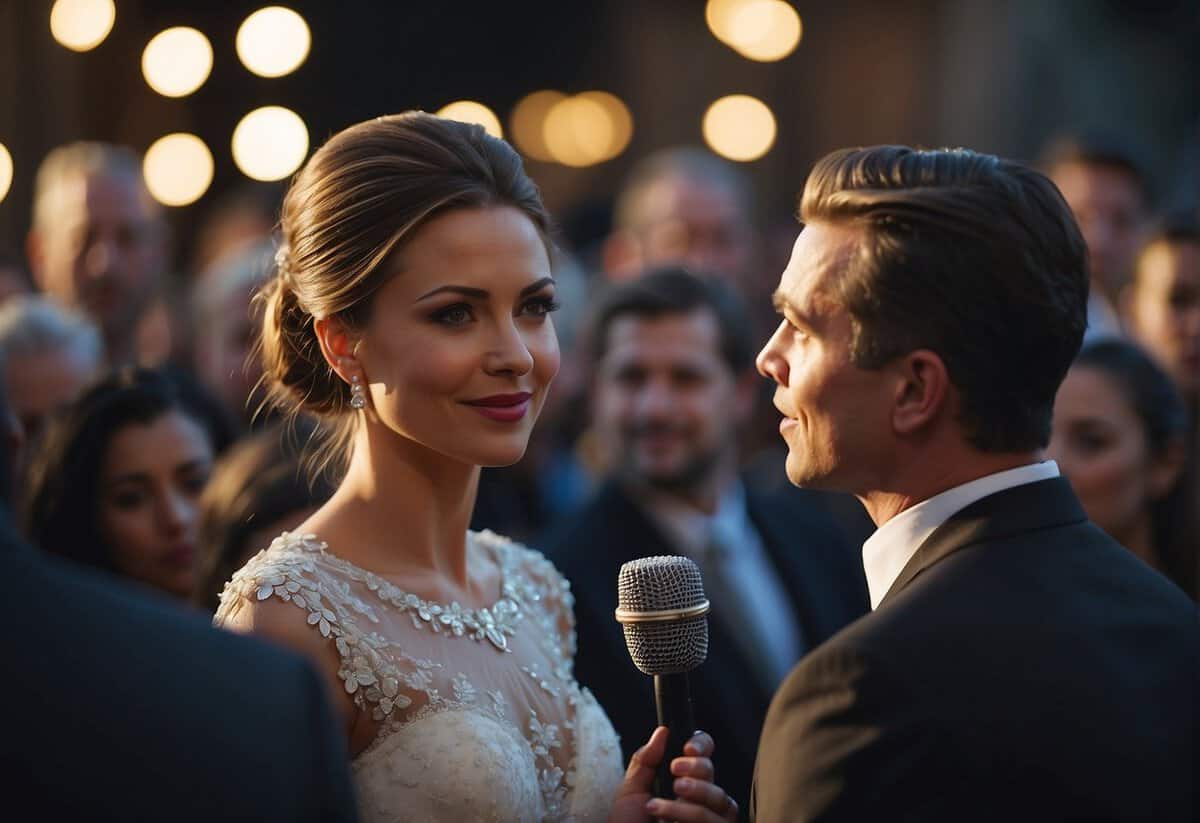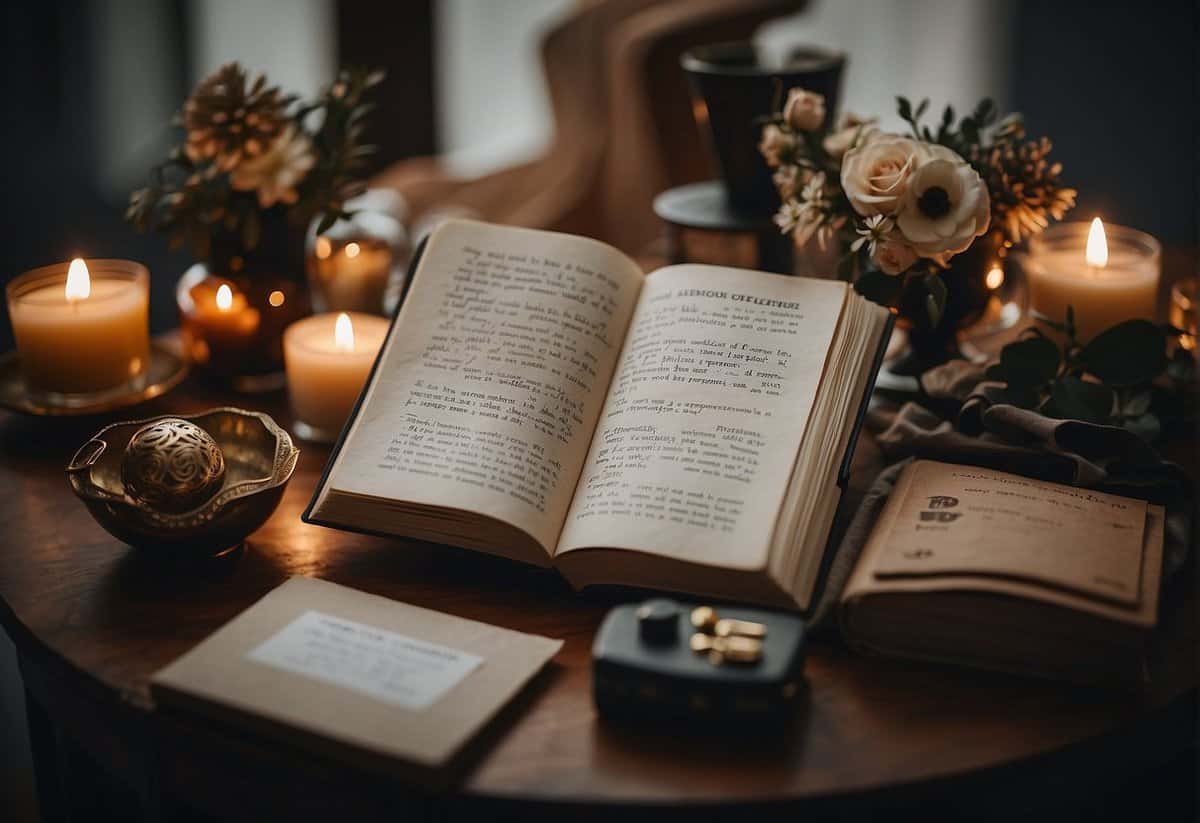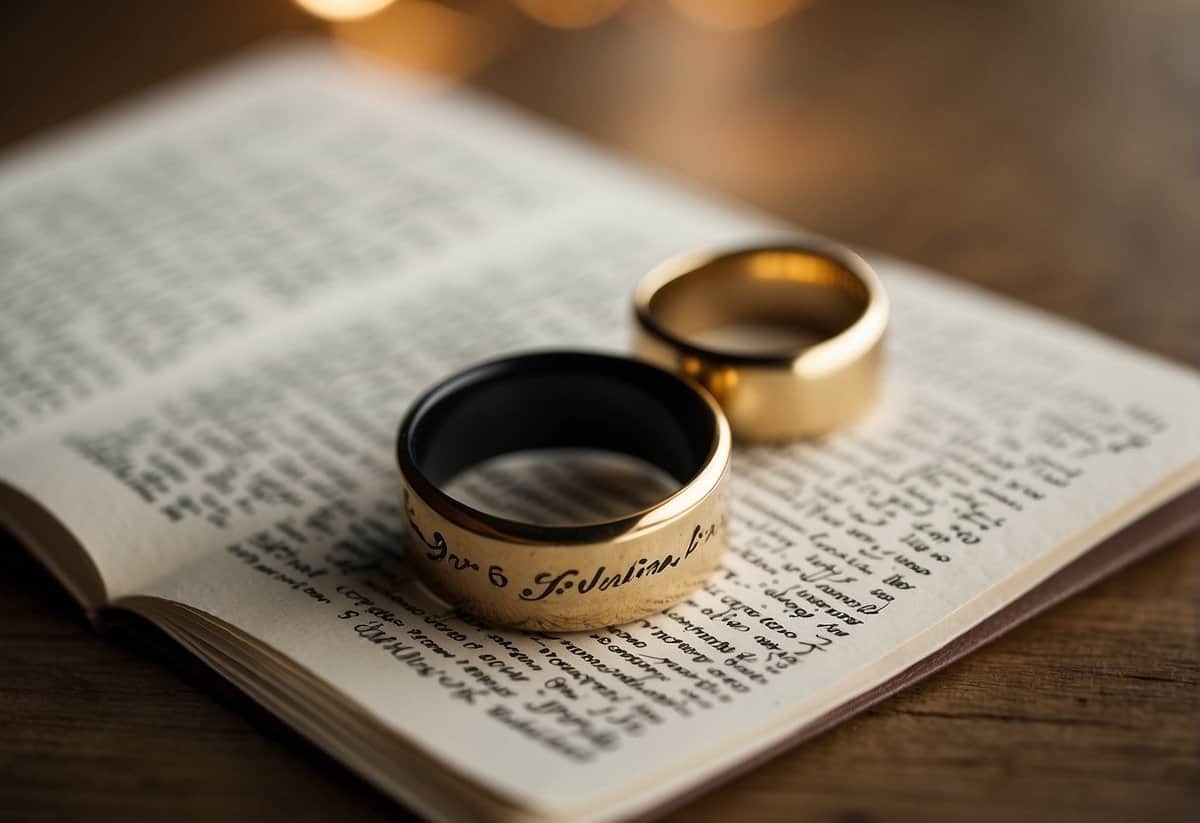Who Reads Vows First: Order and Etiquette for Your Ceremony
When preparing for a wedding ceremony, one of the most heartfelt and anticipated moments is the exchange of vows. These promises symbolize the commitment and love between the couple, marking the beginning of a shared life. Whether spoken from the depths of one’s heart or recited from time-honored scripts, the vows set the tone for the union.

The order in which vows are exchanged can vary depending on cultural and religious traditions or personal preferences. Some couples choose to honor traditional customs, while others opt for a sequence that feels right for their unique relationship. Deciding who reads their vows first is just one of the many personal choices that make each wedding ceremony special.
Key Takeaways
- Vows are a central expression of commitment in a wedding ceremony.
- The sequence of vow exchange can be influenced by tradition or personal choice.
- Flexibility in ceremony structure allows for a personalized expression of love.
The Significance of Vows in a Wedding Ceremony

When you stand before your partner, friends, and family at your wedding ceremony, the vows you exchange are the verbal embodiment of your love and commitment. They act as promises and reveal the depth of your relationship and the values you both cherish.
Understanding Vows and Commitment
Vows are the essence of what it means to be married; these are the words that bind you to your partner. When you voice your commitment, you’re not just saying words—you’re pledging to share a life through thick and thin. Love and commitment are the core of these promises, which outline your intentions to support, respect, and cherish your partner in the unique journey that is marriage.
Cultural and Religious Influence on Vows
Your vows are often influenced by your culture or religion, which can dictate not only the words you say but also the order in which you and your partner recite them. Some cultures may have you follow a specific script, while others might encourage you to speak from the heart. For instance, in a traditional Christian ceremony, it’s common to adhere to historical precedents for vow exchange. This shared experience creates a sense of unity within the community participating in and witnessing your marriage.
Modern Interpretations of Wedding Vows
In modern weddings, vows have evolved to be highly personalized. Couples often choose to write their own, giving them the opportunity to articulate the specifics of their love and commitment in a way that’s most meaningful to them. They also tend to be gender-neutral, reflecting the partnership’s equality. This personalization can hold a great deal of significance, making the ceremony more memorable and directly reflecting the couple’s unique relationship and values.
Order of Vows and Wedding Ceremony Structure

When it comes to your wedding ceremony, the structure and order in which you and your partner read vows can be a blend of tradition and personal choice. It’s a moment that sets the tone for your commitment to each other.
Traditional Order of Reading Vows
In traditional wedding ceremonies, the officiant typically leads the processional, followed by the groom, wedding party, and finally, the bride. Once all have taken their places, the exchange of vows usually begins with the groom, adhering to a traditional order that some find symbolically significant. This customary practice can be seen in many religious and secular ceremonies alike, and it is often outlined in the standard ceremony script.
Customizing the Order for Personal Preference
However, you don’t have to stick to tradition if it doesn’t resonate with you. Many couples choose to customize the order of their vows, reflecting their personal preferences and the unique nature of their relationship. Some opt to have the bride go first, while others decide to speak in unison or share a dialogue of vows. This customization is becoming increasingly common, allowing you and your partner to emphasize the partnership and mutual respect inherent in your union.
Equality and Inclusivity in Vow Exchanges
For same-sex couples and those who strive for equality in their relationship, the order of vows can be an important consideration. Many opt to disrupt the traditional sequence to symbolize balance and inclusivity. The decision of who reads vows first, or whether you do it simultaneously, is a powerful way to demonstrate your commitment to equality from the very start of your marriage.
When deciding on the order, it’s essential to communicate with your officiant and ensure that everyone is comfortable and clear about the ceremony script. Remember, your wedding day is a celebration of your love and commitment, so feel free to structure it in a way that feels true to both of you.
Incorporating Personal Elements into Vows

When crafting your wedding vows, infusing personal elements can transform a traditional ceremony into an intimate reflection of your unique relationship. It’s essential to convey your love and commitment through words that resonate with your personal values, and shared experiences.
Writing Personal Vows
Your personal vows are a profound way to express your feelings and promises to your partner. Begin by reflecting on the milestones and private moments that define your relationship. Consider mentioning specific experiences that illustrate your journey together. Here’s a straightforward approach:
- Start with a memorable story about you two.
- Express what you admire in your partner.
- Pledge your commitment, highlighting personal values and future promises.
Always communicate with your partner to ensure your vows complement each other and reflect a balance of your emotions and humor.
Involvement of Family and Guests
Involving family and guests can add a diverse and heartfelt layer to your vows. You might ask them to contribute a word or phrase that they believe symbolizes your relationship. During the ceremony, you can weave these into your vows, creating a tapestry of communal love and support. Alternatively, consider a ritual where your family or friends present you with elements that symbolize their wishes for you, which you can then incorporate into your vows verbally.
Adapting Traditions in Vows
Your vows can honor family traditions or your shared culture without sacrificing personal relevance. For example, if language is an essential aspect of your heritage, include a few words or phrases from your native tongue. This not only pays homage to your background but also enriches the ceremony with your identity. Should your faith play a significant role, you can adapt traditional religious vows to reflect your personal connection to those tenets. Balancing tradition with personal preference allows your vows to feel both individualized and rooted in your cultural or familial identity.
Frequently Asked Questions

When attending or planning a wedding, you might wonder about the traditional order of events for wedding vows. Each ceremony can have its own flow, but there are customary patterns that many couples follow.
In what order do the bride and groom usually recite their vows?
Traditionally, during the wedding ceremony, the groom is prompted to say his vows first, followed by the bride. This sequence is common but not obligatory.
During a Catholic wedding ceremony, who traditionally says their vows first?
In a Catholic wedding ceremony, the order is quite structured—typically, the priest asks the couple three questions, and they answer “I do” or “I will” in turn.
Is there a specific order for exchanging rings and reciting vows?
The exchange of rings usually happens after the reciting of vows. First, each partner shares their commitment through their vows, and then they symbolize this commitment by exchanging rings.
What’s the typical sequence for saying ‘I do’ and reading vows at a wedding?
The phrase ‘I do’ traditionally comes after the reading of vows. The officiant asks questions about the commitment, to which each person replies with ‘I do’, signifying their agreement to the vows exchanged.
Can the sequence of vow exchange be personalized for a wedding ceremony?
Absolutely, modern ceremonies often vary the order of vows to suit the couple’s preferences. Some couples choose to personalize their wedding ceremonies which can include altering the traditional sequence of vow exchanges.
Who initiates the vow exchange during a wedding procession?
Typically, the person officiating the wedding initiates the vow exchange, directing first the groom and then the bride to recite their promises to each other.
